Coues deer are one of hunting’s best-kept secrets, and more and more hunters are discovering every year just how fun these deer are to hunt. But where do you get started when it comes to coues deer hunting in Arizona? Let’s go over everything that you need to know!
This page contains affiliate links. As an Amazon Associate, I earn from qualifying purchases.
Table of Contents
- Planning the Hunt
- Licenses, Tags, and the Draw
- Coues Deer Tags and License Fees
- Where to Hunt Coues in Arizona
- Necessary Gear
- Hunting Tactics for Coues Deer
- Final Thoughts
Planning the Hunt
Like all major hunts, the planning stage is one of the most important. There are a lot of logistics that go into traveling to Arizona and getting a tag. Depending on where you live, you can either drive or fly to the state.
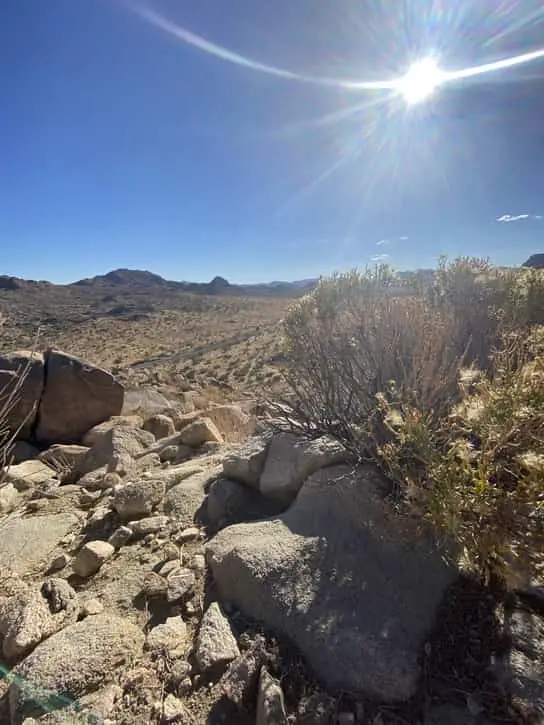
Driving to Arizona may take a little longer than flying, but it also gives you a vehicle that you can use to hunt with. If you fly, you will most likely need to rent a vehicle to drive and hunt with once you arrive. These are some of the beginning details that you will need to think about when first starting to plan your first coues deer hunt!
Even if you decide to drive, you will have to consider your budget. From gas prices, hotel stays, and food to the actual cost of your tag and hunting license, it can all add up pretty quick! Speaking of tags and licenses, let’s go over how to make sure you are legal before heading to the Grand Canyon state.
Licenses, Tags, and the Draw
The Arizona Game and Fish Department set aside ten percent of all big game tags in Arizona for non-residents. This doesn’t mean, however, that coues deer tags are hard to get. Coues whitetail can be found just south of the city of Flagstaff all the way down to the Mexico border.
The best coues deer country, however, is found south of the city of Tucson.
The deadline to apply for rifle coues deer tags for both residents and nonresidents is generally around the second Tuesday of June of each year. Rifle hunts take place in late October, November, and December. They are usually broken down into four different hunts which are:
- 1st General Hunt: Last weekend of October
- 2nd General Hunt: Second weekend of November
- 3rd General Hunt: Last weekend of November (Thanksgiving weekend)
- 4th Trophy Hunt: Middle of December to the end of the year.
General hunts are much easier to draw than the “trophy” rifle hunt that takes place in December. While the weather may be a little warmer and the deer will not be rutting in October and November, tags are much easier for non-residents to draw. Depending on the unit and the season, you could potentially have a rifle tag every single year!
For the archery hunter, Arizona currently offers over-the-counter archery tags (although there are rumors of this changing in the near future.) The archery season starts in late August and runs into early September, then opens again in mid-December and runs through the entire month of January in most units. For now, these over-the-counter tags are open to both resident and nonresident hunters.
While the early August archery season can be extremely warm, the deer are in velvet and great success can be found by sitting over water.
During December and January, however, the weather is significantly cooler and the deer will be rutting. Of course, the best time will also come down to your own schedule and when you can plan a hunt!
Coues Deer Tags and License Fees
So how much do these tags and licenses cost? A general hunting license must be bought before purchasing or applying for a deer tag, and this will cost a non-resident $160. This is non-refundable and required to apply for a draw tag or to buy an over-the-counter tag. The tag itself will cost a non-resident $300.00 plus a $15.00 application fee.
If purchasing an otc archery tag, the cost is $15.00 cheaper as there is no application fee. This archery tag is also good for any antlered deer, so you can shoot either a mule deer or a coues deer in an open, otc unit during the archery hunt. You can find a full breakdown of different license and tag fees here: https://www.eregulations.com/arizona/hunting/hunting-licenses-fees
Where to Hunt Coues in Arizona
One of the greatest aspects of hunting Arizona is the giant abundance of public land. While some units will have some private land issues, most are wide open to hunting as they have state, BLM, and forest service lands that coues call home. All of the units that have coues deer are also very different and have many different types of terrain that you can hunt.
BLM land is managed by the federal agency Bureau of Land Management and is open to hunting and camping in Arizona during any part of the year. State land is managed by the state of Arizona and is only open to hunters who have a valid hunting license.
Lastly, forest service land is managed by National Forest Service. This federal agency has specific rules pertaining to certain forests, but you are allowed to hunt and camp on this land. It is also one of the largest public land areas in the state!
While there is some private land throughout the state, all of this public land is open to hunting and full of coues deer.
Coues can be found from high elevations in the pines all the way down to the desert bottoms in the ocotillos. You can choose a coues deer unit that has the type of terrain that you want to hunt, as well as the deer populations that you are looking for.

Some units have high populations of deer, but this does not necessarily mean it is easier to hunt or to find big bucks. In fact, some of the biggest bucks come from units with lower deer densities!
A quick look through the regulations will show you all of the available units you can hunt, both for archery and rifle. Take a look at tag numbers, season dates, and other details to narrow down your search for some interesting units.
In these regulations, you can also find important information like previous harvest data as well. These numbers can help you figure out things like hunter success rates and hunting pressure. Getting a bigger picture of the different hunts with statistics will help you in your search to find a unit and hunt that is a good fit for you.
You can then take a look at the units on software like Google Earth to get a feel of what the land actually looks like and some potential areas that you can hunt! This will also show you things like feeding areas, travel routes, water sources, and glassing knobs that you can use to better find the coues deer.
Necessary Gear
Once you have some of the logistics figured out and a plan to acquire a coues deer tag, you will next have to make sure that you have all of the right gear for the hunt. Coues deer live in extremely rough and nasty country, and it can be unforgiving on your hunting gear. A few essential gear items for any coues deer hunt includes things like:
- Broken in hiking boots
- Comfortable backpack
- Binoculars with a tripod
- Layered clothing system
- Sunscreen
- Rangefinder
- First Aid kit
- GPS
This is not an all-inclusive gear list, but just some of the essential items that any coues deer hunt will require. Good boots, a comfortable backpack, and optics on a tripod will be your best friends on the hunt and will ensure you have a much more enjoyable hunt.
A layered clothing system will help to keep you comfortable throughout the day, as it can be very cold in the mornings but get very hot during the middle of the day.
If you are rifle hunting, you will want to bring along a rifle that is flat shooting and capable of longer distances. While coues deer are very small animals and don’t require a big caliber (anything from a 243 and up will do just fine) they do live in big country and are hard to get close to.
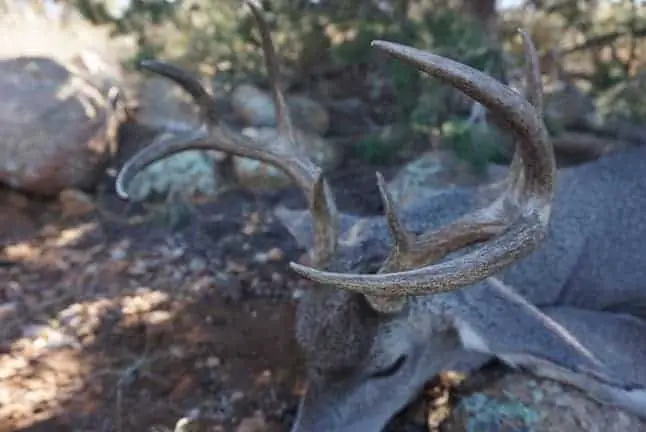
The average rifle shot on coues deer will be anywhere from 250 to 500 yards.
If you are archery hunting, you will still want to practice out to longer ranges with your equipment. Spot and stalk coues deer is one of the ultimate hunting challenges, and shots will more than likely be longer distances.
You should be able to comfortably shoot out to a minimum of 60 yards unless you plan on solely hunting from a treestand or ground blind over water or a trail. Of course, your preferred hunting tactic will dictate how close you get to these skittish deer.
Hunting Tactics for Coues Deer
Spot and stalk hunting is easily one of the most popular and preferred methods of hunting coues deer. It is, however, one of the most difficult! Coues deer are notorious for being extremely skittish and jumpy. They are small animals that are always on edge as everything from bears, mountain lions, bobcats, coyotes, and even eagles prey on them.
Your optics and tripod will play a vital role in spotting coues deer from different vantage points. Once a buck is spotted, you can then come up with a game plan in order to cut the distance and get closer. Whether you are rifle hunting or bow hunting, spot and stalk is a great way to see plenty of deer throughout the day and effectively hunt them.
Archery hunters may want to use a different method in order to get closer to the deer, especially after a few failed stalks. Luckily ambush hunting is very effective for coues deer, such as sitting over a well-used trail or water source. Whether sitting in a treestand or ground blind, Arizona is dry and water is a high traffic area that sees plenty of deer activity.
Coues deer can also be hunted through methods like still hunting or even deer drives, but these tactics are usually much less effective than spot and stalk or ambush hunting.
Again, the terrain that these deer live in is giant and it can take hours just to cover a single hill. It is much better to let your eyes do the walking for you through the use of your optics!
Final Thoughts
Coues deer hunting in Arizona is certainly an adventure that you will never forget. If you have never done it before, hopefully now you have the knowledge and confidence to begin planning your first hunt.

But be warned, it is extremely addictive and you may want to start going every single year!
- Neem Oil Deer Repellent: Does It Really Work?

- Is It Okay To Burn Bark In a Wood Stove?
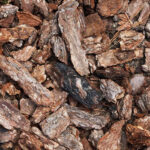
- Do Deer Eat Morel Mushrooms?
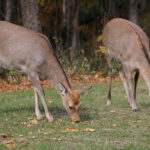
- How To Properly Dispose of Wood Stove Ashes (Safely!)

- Is Fatwood Safe for Wood Stoves? Here’s What You Should Know

- Is Beaver Good to Eat? You May Be Surprised!

- Is Bread Bad For Deer? Here’s What You Should Know
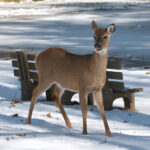
- Are Roosters Good to Eat?

- 3 Easy Ways To Tell If Your Wood Stove Is Leaking
